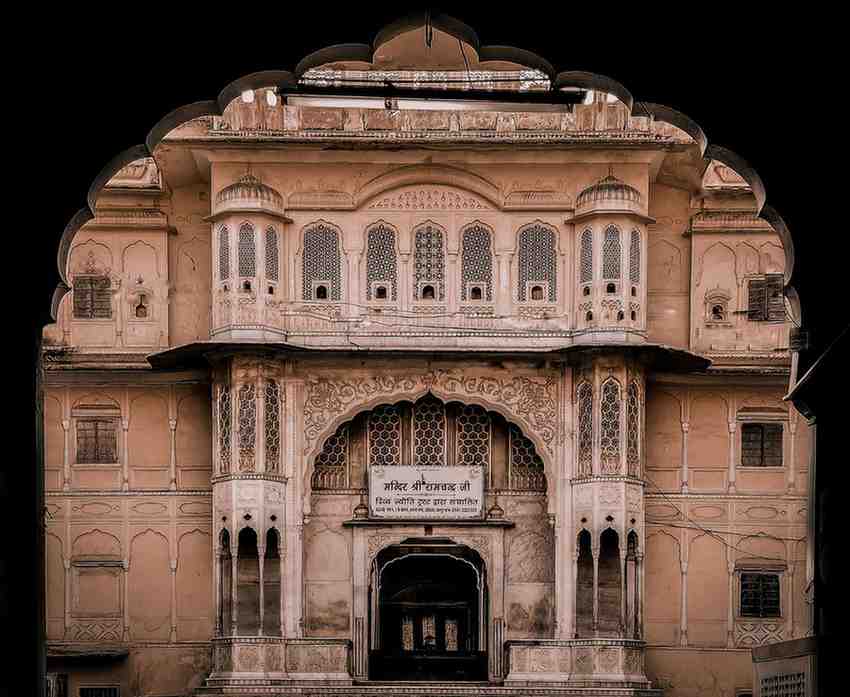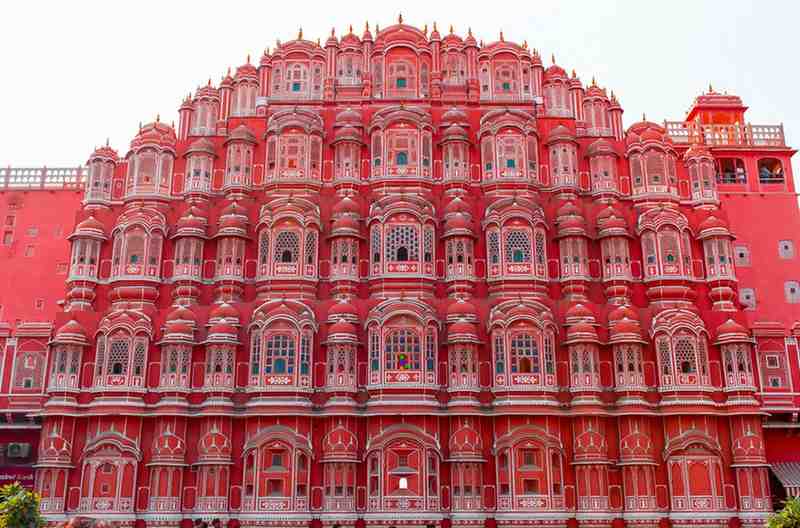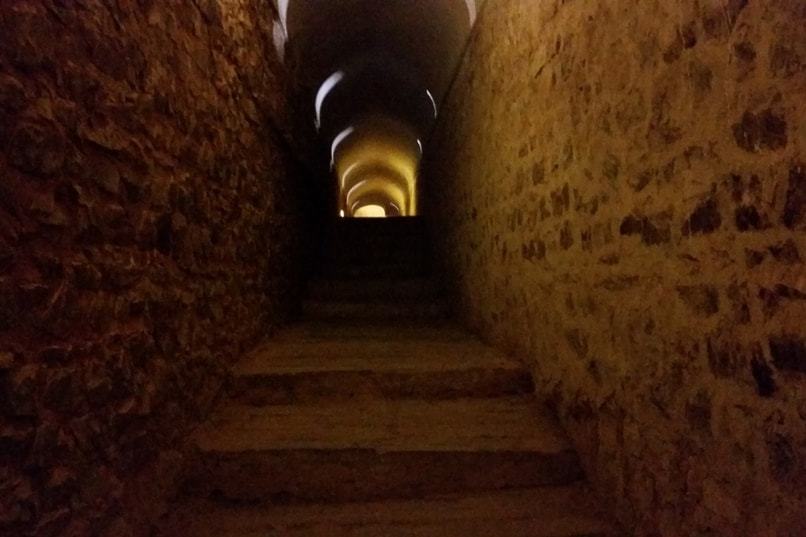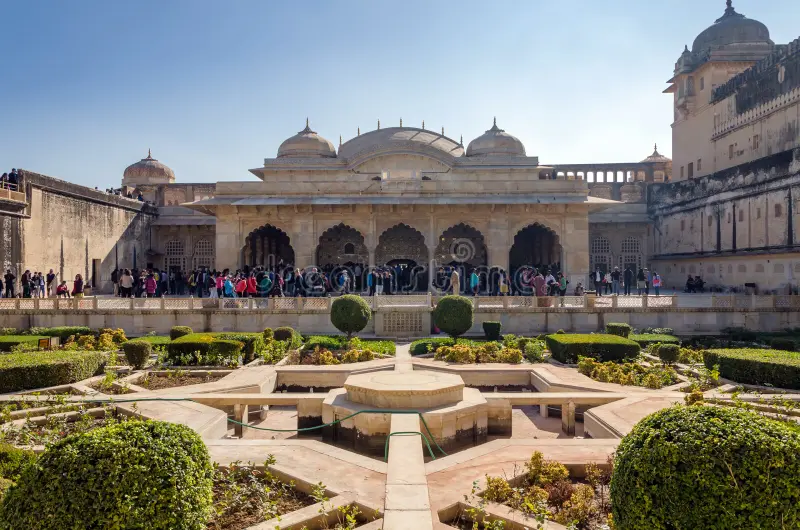Jaipur, the capital of Rajasthan, is one of India’s most enchanting cities, known for its rich history, grand palaces, and vibrant culture.
But among all its unique features, one thing stands out—its iconic pink color.
From the majestic Hawa Mahal to the bustling streets of the old city, Jaipur is bathed in shades of terracotta pink, giving it the famous nickname, “The Pink City.”
But why is Jaipur called the Pink City?
How did it become pink, and why does it remain that way even today?
Let’s explore the fascinating story behind this royal transformation.
The Birth of Jaipur: A Well-Planned City

Jaipur was founded in 1727 by Maharaja Sawai Jai Singh II, who decided to shift the capital from Amber to Jaipur due to increasing population and water scarcity.
Unlike other Indian cities that grew chaotically, Jaipur was designed meticulously based on Vastu Shastra and Shilpa Shastra, ancient Indian architectural sciences.
The city was built with wide roads, massive forts, grand palaces, and well-structured markets, making it India’s first planned city.
However, it wasn’t pink at that time! So, when and why did Jaipur get its signature pink hue?
The 1876 Royal Visit: A Citywide Transformation

The story of Jaipur’s pink transformation begins in 1876, nearly 150 years after its founding.
During this time, India was under British rule, and the Prince of Wales (later King Edward VII) planned a visit to the Indian subcontinent.
Jaipur’s ruler at the time, Maharaja Sawai Ram Singh II, saw this as an opportunity to impress the British monarchy and showcase Jaipur’s grandeur.
To honor the royal guest, Maharaja Ram Singh II decided to give Jaipur an unforgettable makeover.
But instead of just decorating the palaces, he went a step further—he ordered the entire city to be painted in shades of pink.
Why the Color Pink? The Symbolism Behind It

Jaipur’s pink hue wasn’t chosen randomly—it had deep significance.
In Rajasthani culture, pink symbolizes hospitality, warmth, and a grand welcome.
By painting the city pink, the Maharaja wanted to send a message that Jaipur was a city of warmth and generosity, ready to welcome its royal visitors with open arms.
Fun Fact: Different shades of pink were used in various parts of the city, with some walls featuring a mix of ochre and red tones.
The Execution: How Jaipur Became the Pink City

Transforming an entire city wasn’t easy, but the Maharaja ensured it was done quickly and efficiently:
✅ Orders were issued for all buildings in the old city to be painted pink.
✅ Local artisans and workers were assigned to complete the massive project.
✅ Shops, houses, palaces, and even small lanes were given a fresh pink coat.
By the time the Prince of Wales arrived, Jaipur had been completely transformed into a breathtaking pink wonderland!
The royal guest was highly impressed, and Jaipur earned the title of “The Pink City.”
The Pink Law: A Tradition That Lives On
The pink paint was originally meant to be temporary, just for the royal visit, but the people of Jaipur loved the look so much that the Maharaja passed a law in 1877, making it mandatory for all buildings in the old city to remain pink forever.
Even today, this law is strictly enforced, ensuring that Jaipur retains its signature look.
While modern Jaipur has expanded with different colored buildings, the old city still proudly wears its pink coat, preserving its heritage.
Jaipur’s Iconic Pink Landmarks
Some of Jaipur’s most famous attractions showcase this unique pink architecture:
Hawa Mahal (Palace of Winds)
- The most iconic landmark of Jaipur, featuring 953 small windows (jharokhas) that allow air to pass through.
- Designed for royal women to observe street life without being seen.
City Palace
- A grand blend of Mughal and Rajput architecture, painted in soft pink shades.
- Home to Jaipur’s royal family.
Albert Hall Museum
- A stunning Indo-Saracenic-style building, glowing beautifully under evening lights.
- Houses Rajasthan’s finest art collections and artifacts.
Johri Bazaar & Bapu Bazaar
- Jaipur’s most famous shopping hubs, featuring pink-walled streets.
- The best place to buy Rajasthani jewelry, handicrafts, and textiles.
How is Jaipur’s Pink Heritage Maintained Today?

Jaipur has evolved over the years, but the government and local authorities ensure that the city’s pink heritage remains intact:
✅ Strict regulations: Any restoration work in the old city must use the same pink shade.
✅ Annual repainting efforts keep the buildings fresh and vibrant.
✅ UNESCO recognition – Jaipur’s walled city was declared a UNESCO World Heritage Site in 2019, further strengthening conservation efforts.
Even new constructions in Jaipur blend pink elements to maintain the city’s historical charm.
The Timeless Beauty of Jaipur’s Pink Legacy
So, why is Jaipur called the Pink City? Because of a Maharaja’s grand vision, a royal visit, and a tradition of hospitality that continues even today.
Jaipur’s pink hue is more than just a color—it represents a rich history, a welcoming spirit, and a royal legacy.
Whether you’re exploring its palaces, shopping in its bazaars, or simply walking through its streets, the Pink City never fails to enchant.
💡 Final Thought: If you haven’t visited Jaipur yet, what are you waiting for? Come and witness the beauty of India’s Pink City for yourself!


1 thought on “Why is Jaipur Called the Pink City?”